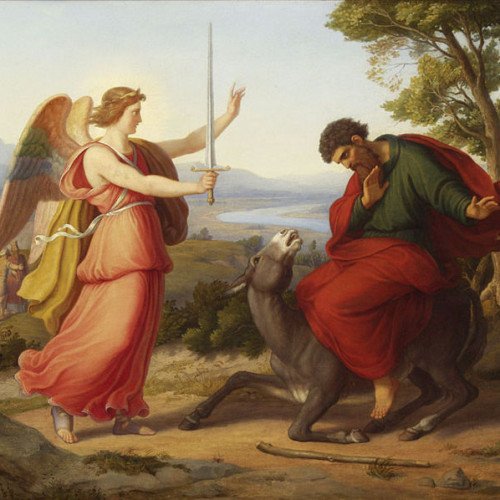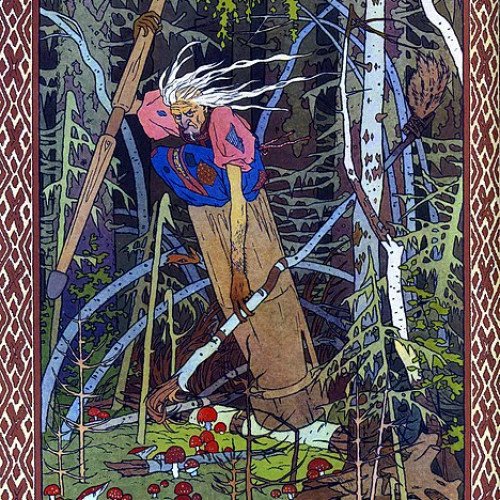Vote on Mythical creatures: Satan vs Baba Yaga

Satan
Satan, also known as the Devil, is an entity in the Abrahamic religions that seduces humans into sin or falsehood. In Christianity and Islam, he is usually seen as either a fallen angel or a genie, who used to possess great piety and beauty, but rebelled against God, who nevertheless allows him temporary power over the fallen world and a host of demons. In Judaism, Satan is typically regarded as a metaphor for the yetzer hara, or "evil inclination", or as an agent subservient to God. A figure known as "the satan" first appears in the Tanakh as a heavenly prosecutor, a member of the sons of God subordinate to Yahweh, who prosecutes the nation of Judah in the heavenly court and tests the loyalty of Yahweh's followers by forcing them to suffer. During the intertestamental period, possibly due to influence from the Zoroastrian figure of Angra Mainyu, the satan developed into a malevolent entity with abhorrent qualities in dualistic opposition to God. In the apocryphal Book of Jubilees, Yahweh grants the satan (referred to as Mastema) authority over a group of fallen angels, or their offspring, to tempt humans to sin and punish them. In the Synoptic Gospels, Satan tempts Jesus in the desert and is identified as the cause of illness and temptation. In the Book of Revelation, Satan appears as a Great Red Dragon, who is defeated by Michael the Archangel and cast down from Heaven. He is later bound for one thousand years, but is briefly set free before being ultimately defeated and cast into the Lake of Fire. In Christianity, Satan is known as the Devil and is sometimes also called Lucifer. Although the Book of Genesis does not mention him, he is often identified as the serpent in the Garden of Eden. In the Middle Ages, Satan played a minimal role in Christian theology and was used as a comic relief figure in mystery plays. During the early modern period, Satan's significance greatly increased as beliefs such as demonic possession and witchcraft became more prevalent. During the Age of Enlightenment, belief in the existence of Satan was harshly criticized by thinkers such as Voltaire. Nonetheless, belief in Satan has persisted, particularly in the Americas. In the Quran, Shaitan, also known as Iblis, is an entity made of fire who was cast out of Heaven because he refused to bow before the newly-created Adam and incites humans to sin by infecting their minds with waswās ("evil suggestions"). Although Satan is generally viewed as evil, some groups have very different beliefs. In Theistic Satanism, Satan is considered a deity who is either worshipped or revered. In LaVeyan Satanism, Satan is a symbol of virtuous characteristics and liberty. Satan's appearance is never described in the Bible, but, since the ninth century, he has often been shown in Christian art with horns, cloven hooves, unusually hairy legs, and a tail, often naked and holding a pitchfork. These are an amalgam of traits derived from various pagan deities, including Pan, Poseidon, and Bes. Satan appears frequently in Christian literature, most notably in Dante Alighieri's Inferno, variants of the Faust legend, John Milton's Paradise Lost and Paradise Regained, and the poems of William Blake. He continues to appear in film, television, and music.
Statistics for this Xoptio

Baba Yaga
In Slavic folklore, Baba Yaga (Russian: Баба-Яга, romanized: Baba Yaga) is a supernatural being (or a trio of sisters of the same name) who appears as a deformed or ferocious-looking old woman. In Slavic culture, Baba Yaga lived in a hut usually described as standing on chicken legs.Baba Yaga may help or hinder those that encounter her or seek her out. She may play a maternal role and has associations with forest wildlife. According to Vladimir Propp's folktale morphology, Baba Yaga commonly appears as either a donor, villain, or may be altogether ambiguous. Her depictions vary greatly across tales, ranging from a child-eating monster, to helping a protagonist find his missing bride. Andreas Johns identifies Baba Yaga as "one of the most memorable and distinctive figures in eastern European folklore", and observes that she is "enigmatic" and often exhibits "striking ambiguity". Johns summarizes Baba Yaga as "a many-faceted figure, capable of inspiring researchers to see her as a Cloud, Moon, Death, Winter, Snake, Bird, Pelican or Earth Goddess, totemic matriarchal ancestress, female initiator, phallic mother, or archetypal image".